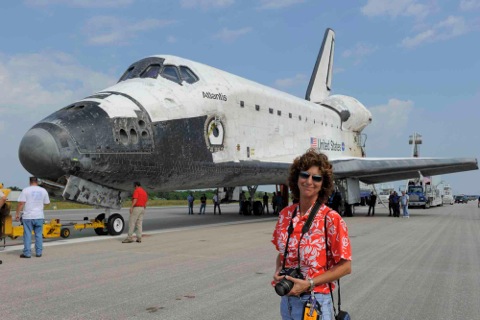
By Patricia Caso/November 30, 2012
Photos: Ann Micklos at blueplanetphotos.org
Harborview Market in Bridgeport, Connecticut routinely displays local artists’ work. I was fascinated by a stunning photography exhibit of space shuttles that I saw there recently! I inquired about the photographer, Ann Micklos.
“I try to capture the moment, something that really has a story behind it whether it’s the shuttle, astrophotography or animals.” Ann Micklos
It was doubly interesting to find out that for 25 years and 110 missions Ann worked at Kennedy Space Center as one of NASA’s few female aerospace engineers and team leaders. She’s also the first female Mission Assurance Engineer in their Launch Services Program.
I was eager to talk to Ann who has challenged the norm from her elementary school days…
EYE: When and how did you decide to become an aerospace engineer, Ann?
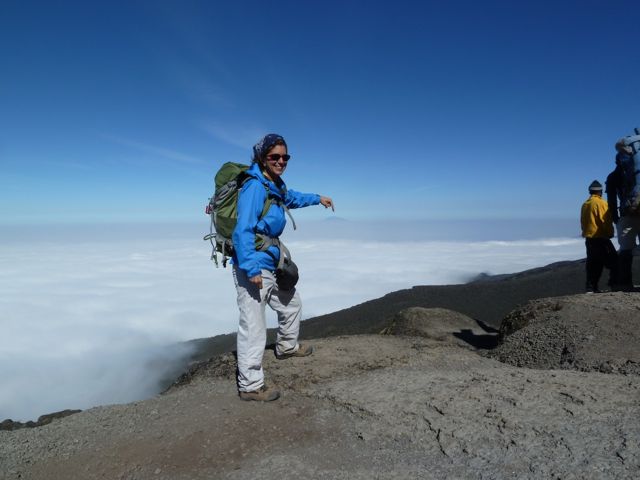
ANN: I was always interested in the stars and space. In elementary school, I ended up being the first female in the rocketry club. We were little sixth graders, launching our homemade rockets in the school field.
I had such a blast! It was just so much fun putting it together, trying to get everything right, sanding the wood correctly, then lighting and seeing them go up! To know this little tube you made went straight up in the air and that the parachute came out meant that we could launch rockets!
In high school, I joined a program at Fairfield University, which was in cooperation with NASA, trying to come up with an experiment “to fly in space.” This was at the beginning of the space shuttle era in 1979. We came up with something so elementary but so very practical and made the perfect sphere. Knowing that I was part of that team, and that NASA might consider it, was exciting!
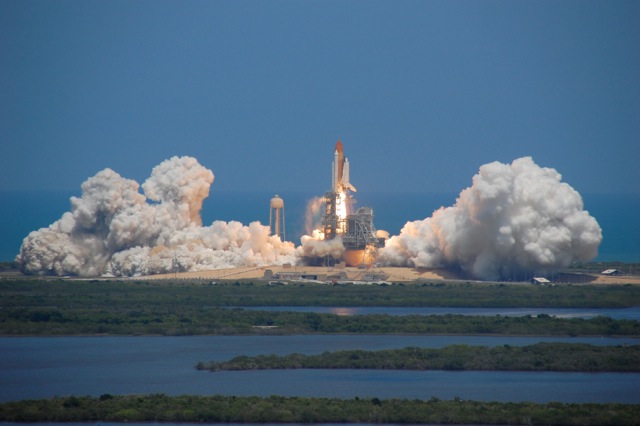
EYE: Why is human exploration in space so important to you?
ANN: One thing about space exploration, not to quote Star Trek, is that it really is one of our final frontiers. Look at the vastness of space. I like to use the analogy that if you are walking on the beach and pick up a grain of sand, that’s the earth–that grain of sand.
If you look at the whole beach, that is the whole universe. Why would you want to just stay on this little grain of sand? Importantly, there are things humans can do in space to help different medical fields and to understand different things that necessarily cannot be learned on earth.
At the International Space Station, in addition to different scientific experiments, they perform experiments on themselves to see what it is like living in space, which is very harsh.
EYE: With all this important work, how did you feel when NASA announced the end of the shuttle program? (Below we see the last Orbiter Endeavour’s historic move this fall to the California Science Center in Los Angeles.)
Ann: Of course I was sad, but the space shuttle’s prime mission was completed. The International Space Station construction was finished. It took 35 missions to bring 800,000 pounds of components and segments there.
EYE: Were you involved with the final Endeavour flight in 2011?
ANN: Yes, and I was on the runway for her last flight. I am so very glad that Endeavour is in California. She was the last space shuttle to be built in Palmdale.
EYE: In conversation you refer to shuttles as “She.”
ANN: Yes! The shuttle is always a she! They are all named after famous sailing ships. And, sailing vessels are referred to as “She.” Keeping up with the nautical tradition, the shuttles were treated the same way. You treat those vehicles with respect!
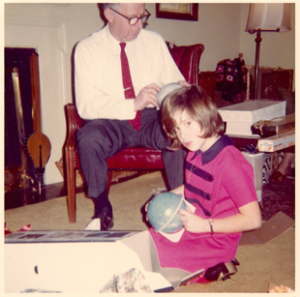
EYE: I understand that your high school guidance counselor said you were not smart enough to become an aerospace engineer.
ANN: Here I was, a junior in high school, and I thought I knew what I wanted to do. I thought I might be derailed, but Mom said, ”Ann, whatever you do in life, do what you love.” And that really just sunk in with me.
I loved math and physics. I was an Honors student. My summers were always spent on the beach, always sailing with my sunfish. If there was anything to do with the water, I was involved with it. So I thought I would major in Oceanography.
I attended Florida Institute of Technology, and a month prior to graduation, I learned NASA was looking for engineers. I applied and got accepted as an aerospace engineer at the Kennedy Space Center!
“I am seeing an increased interest and support for women choosing engineering careers.”
EYE: I bet there weren’t many women in that field?
ANN: I noticed that, even back with the rocketry club. When I went to college, the ratio of men to women was 10 to 1. When I went to work, the ratio was maybe a little bit higher.
I think men tend to be more analytical, where sometimes women use the other side of the brain and are encouraged to do that. You really have to enjoy math and the sciences and be able to appreciate what they have to offer.
I honestly think that more than a gender bias, it is more of an interest thing. By the way, NASA now has a wonderful site about women, Women at NASA. I am seeing an increased interest and support for women choosing engineering careers.
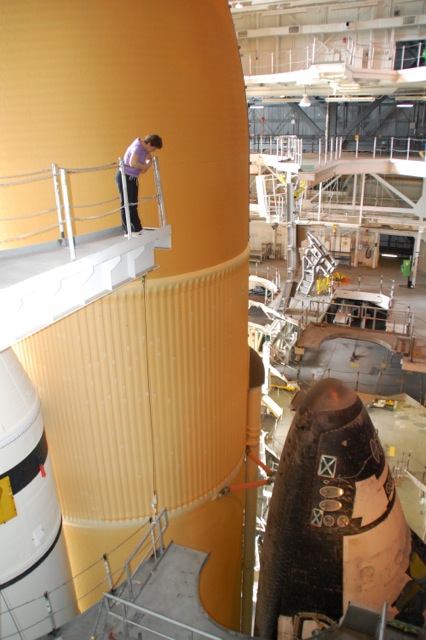
EYE: Was the shuttle program everything you wanted it to be?
ANN: Over and beyond!! Our engineering group was fresh out of college, and we just loved what we were doing! We became a family! We wanted to be there; it wasn’t just a job.
EYE: Did you ever think about being an astronaut?
ANN: Not seriously. I love my earthbound job which basically ensures the shuttle’s heat shield is viable so it returns in one piece. Given the chance to be up in the shuttle, I would love to just look out the window. Just to look back at earth, to marvel that I was orbiting around earth, would be mind-boggling.
Then, I would look out at reentry to the earth’s atmosphere to actually see the hot plasma trail around the shuttle and see how the heat shield reacts. Experiencing that after working those systems on earth, would be incredible!
“When it sunk in that Dave wasn’t coming home, at that moment everyone’s life changed. Total shock.“
EYE: Out of the 135 shuttle missions, you worked on 110. One didn’t make it back, the Space Shuttle Columbia, on which your former boyfriend, Dave Brown, was an astronaut. How did you handle the emotional and immense professional stress and pressure?
ANN: It was a daunting time, completely daunting. When it came time for landing, I was standing on the runway with my colleagues, waiting to hear the twin sonic booms. We never heard those booms. It was very odd.
We did not have televisions on the runways, so listening to two-way radio, we heard there had been a loss of communication with the Orbiter. Dave’s mom was at home watching on television. I called Mrs. Brown and asked if she were watching the shuttle. She said, “Yes and I think they are having some trouble. Can’t they go around and try again?”
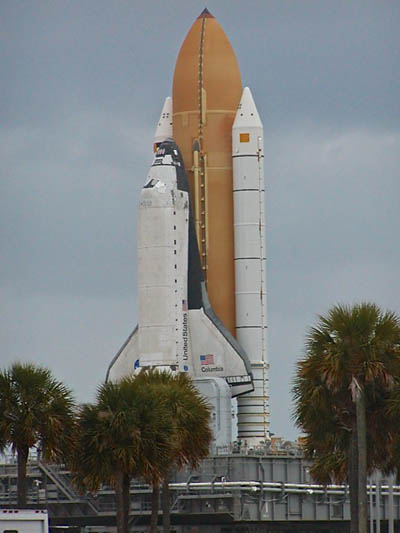
I said, “No, the shuttle only has one try,” and then I said “She’s not going to make it home.” The television was showing it breaking up, which we were not seeing at our end. When it sunk in that Dave wasn’t coming home, at that moment everyone’s life changed. Total shock.
I once asked Dave what if something ever happens? He said, ”I want you to find that person that caused the accident and tell them I hold no animosity. I died doing what I loved.”
EYE: That must have been the toughest challenge of your life. How did you then handle the assignment to be Lead Thermal Engineer in charge of identifying the cause of that failure?
ANN: The chief engineer asked me to lead the effort to find the cause. He said, ”Ann, no one knows Columbia’s tiles better than you because you worked on her for 20 missions.” I was surrounded by my colleagues who felt my loss as well as her loss; we lost our Columbia.
We needed to find out why because that was our commitment, that was our job. People would see me at work and say I was an inspiration, because I was there with everybody else, but there was no other place I would have rather been but with my NASA family.
EYE: What did you find out?
ANN: Basically, a piece of foam came off the external tank during ascent. The foam hit the Orbiter wing’s leading edge, which created about a 5″ hole in the wing’s heat shield. Then during entry, with Columbia flying at about 18,000 mph, the hot plasma gases (over 3,000 degrees F) went into the unprotected wing structural cavity and began to melt the airframe until the Columbia disintegrated.

EYE: After almost ten years this remains a heartbreaking tragedy. Your photos seem to pay tribute to the legacy of such a pioneering time. How did blueplanetphotos.org come about and your love of photography?
ANN: When they announced the shuttle program was coming to an end in 2004, I started documenting the program from the point of view of my day-to-day activities. I took photographs when I was working around the Orbiters.
United Space Alliance asked me to be one of four photographers to take pictures of all the shuttle program co-workers for a yearbook. We also took pictures of the shuttles moving from the hangar to the Vehicle Assembly Building where they get attached to the rockets, and then on to the pad.
The Launch Director then gave me opportunities to get some of the milestone shuttles done mostly in the last three launches. I got some perspectives that might not be seen again. I’d come home and go back to work on my own time because I knew this historic opportunity was never going to happen again.
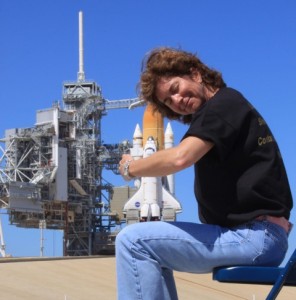
EYE: You are a self-described shuttle hugger?!
ANN: We LOVE our shuttles!
EYE: What about the photos that you took of all those wild animals on your site?
ANN: Between the end of the shuttle program and starting my new job as a Mission Assurance Engineer, I took a sabbatical, traveled to Tanzania with a group of friends and went on safari after climbing Mt. Kilimanjaro.
Photography is art to me. I try to capture the moment, something that really has a story behind it whether it’s the shuttle, astrophotography or animals. It’s about being creative and capturing aspects that may not otherwise be seen.
EYE: Now, what are the challenges for humans in space?
ANN: It’s not where we need to go in space, but how we are going to get there. We have to come up with a different type of propulsion that will enable us to go 100,000 mph or faster in space. Satellites are traveling 35 to 40,000 mph.
We must also build better propulsion systems to get to Mars more quickly. Then we’ll have to build the spacecraft around the systems to travel safely. NASA is already heading toward this goal.
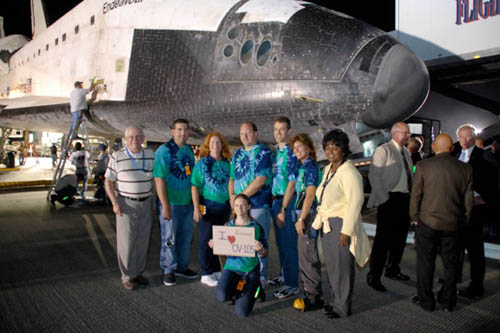
EYE: What do you look forward to?
ANN: I want to see a launch with humans again from Kennedy Space Center. In the meantime, I am working as a mission assurance engineer on the unmanned rocket carrying NASA satellites.
I enjoy the public outreach and telling my shuttle story with the goal of instilling in our younger generation that the glamour of space travel and research is combined with intrigue, dedication and passion. I would like more people to support space exploration and research to make this an even better Earth.
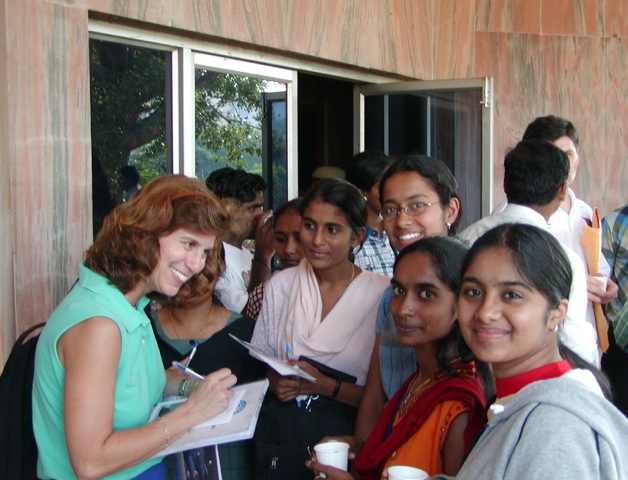
EYE: Your intelligence, compassion and vision are inspiring!
ANN: My motto is “Live, Laugh, Launch, Land!” Space and life are not just fascinating but full of potential!!!
EYE: Continued success in your career and your outreach!! Thank you so much for sharing your photos and your insights!!!! To see more of Ann’s photos, go to Blue Planet Photos. I wanted to add this one last spectacular photo…
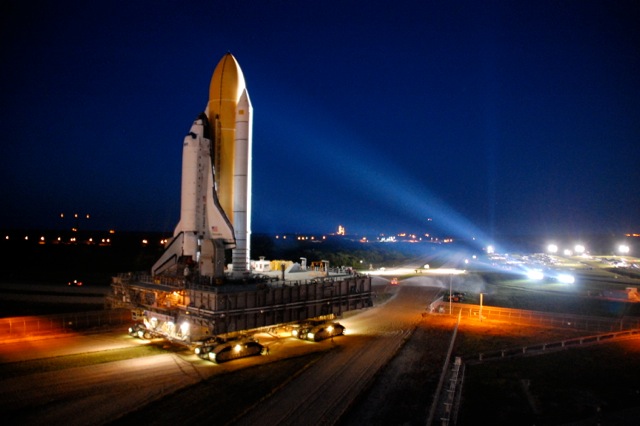
###
About the Author:
Patricia Caso was a television producer and an executive producer for 15 years. She then freelanced and volunteered while raising two young men with her husband, Laurence. Now, Patricia has the wonderful opportunity to interview and write for The Women’s Eye.
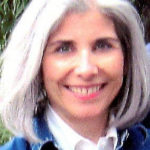



Patricia did a lovely job with the Ann Micklos story. Very inspiring for young women interested in the sciences! Ann’s passion and creative talents certainly have blessed NASA. Her attitude is marvelous!
It was such a pleasure to work with Ann on her story! (And, did I learn a whole lot about what’s beyond our gaze!!!!!) In addition to her work, Ann’s outreach in schools and internationally will continue to inspire! I hope you have some time check out those photos on Ann’s website, Blue Planet photos…They are wonderful!!! Thank you for your comment!
Ann – a beautiful interview. She is a beautiful person. It’s been an honor to know her!
There will be always great woman contribution in our life.
Very good interview, I love the story !
Thank you.